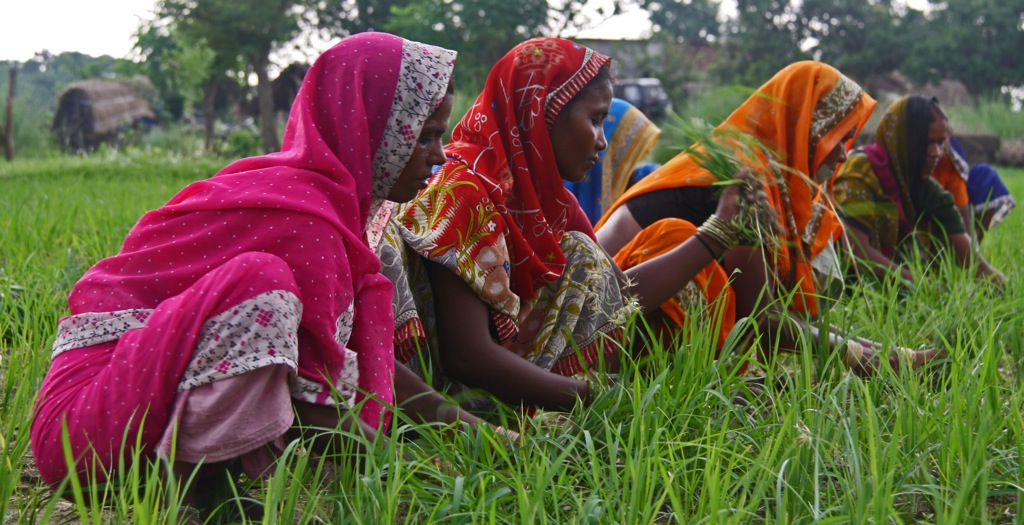Woman can soon be joint owner of agriculture land. A Government-appointed expert panel, set up to lay out the roadmap to double farmers’ income by 2022, has strongly recommended that the focus should now be on the women farmers. It has called for women to be recorded as cultivators in revenue records to make them eligible for all privileges received by farmers (read male counterparts).
Currently, the practice is to only record the name of land owner unless it is contested. Cultivation by family members (women) is not recorded separately. It has also recommended giving women
joint pattas (ownership) for both homestead and agricultural land.
The panel, headed by Agriculture Ministry’s Additional Secretary Ashok Dalwai, also pitched for allowing private operators to use Kisan Vikas Kendra’s (KVK) prime land.
The report called ‘Empowering the Farmers through Science Technology & Knowledge,’ is the fifth report submitted by Dalwai. The report said that women should be recorded as cultivator in revenue records making them eligible for all privileges received by farmers and focus should be given on women farmers and their participation through the promotion of tool banks for small, marginal and subsistence farmers by setting up rural women’s collectives at the panchayat or hamlet level. This will also reduce drudgery and increase efficiency.
“Recording the name of women cultivators or those who labour in their own family farms in the cultivation records can form the basis for her becoming eligible for the benefits of credit, inputs, insurance and compensation. This important step will go a long way in helping women farmers gain access to agriculture services, inputs, such as credit, other schemes and subsidies at par with male farmers. With this inclusion, women will also have decision-making voice in sale of land or any other transactions done on land as collateral. This will reduce also drudgery and increase efficiency,” the report said.
“Though the number of women cultivators and labourers has been increasing, the rate of increase is more in case of women as agriculture labourers from 20.8 million in 1981 to 59.1 million in 2011. In India, the typical work of the woman agricultural labourer or cultivator is limited to less skilled jobs, such as sowing, transplanting, weeding and harvesting. Many women also participate in agricultural work as unpaid subsistence labour,” the report said.
The National Sample Survey (NSS) data shows, that there has been steady decline of men in agriculture over the last three decades with percentage of men coming down from 81 per cent to 63 per cent as compared to women, in whose case it has come down from 88 per cent to 79 per cent. As per report, the average income of an agricultural household during July 2012 to June 2013 was as low as Rs.6,426, as against its average monthly consumption expenditure of Rs.6,223. The data shows as many as 22.50 per cent of the farmers live below official poverty line.
Even in respect of other sub-sector of agriculture, like animal husbandry, fisheries and vegetable cultivation, women are involved in the core activities including in the marketing of the produce. In the dairy sector, almost 5 million women are active members of the milk cooperatives and as of 2016 there were 32,092 ‘women only’ dairy cooperative societies.
Earlier in August, the Ashok Dalwai committee released a four-volume report which said the Central Government’s goal is to raise average incomes of agricultural households from Rs 96,703 in 2015-16 to Rs 1,93,406 in 2022-23 (measured at 2015-16 prices). According to the report, India will need cumulative private and public investments of Rs 1.486 trillion (at 2004-05 prices) during this period to double farmers’ incomes.
The report further states that each KVK is in possession of about 50 acres of land which provides ample opportunity for developing agri-business enterprises, since the guiding principles of ATMAs also provide for promotion of PPPs in Agricultural Extension Delivery, with 10 per cent of the funds to be allocated for such initiatives. “Some of the areas such as farm mechanisation, precision farming, processing, storage, value addition, post-harvest activities, market linkage, agri-logistics may be attractive to private sector as they match their business interest,” it said.
Reviving the ATMA which was conceived as a multi-agency platform for addressing short-comings of agricultural extension including convergence of agriculture and allied sectoral services; gender equity; and linking farmers to markets is the another measures to improve the farmers income suggested in the report. “This Committee considers ATMA to be a case of a good programme whose implementation has been ineffective, and hence recommends retention of the scheme with reforms and a stronger monitoring mechanism to ensure adequate compliance with implementation procedures. It calls for well oriented and trained leadership and use of ICT for ease of management,” Dalwai’s report said.


























